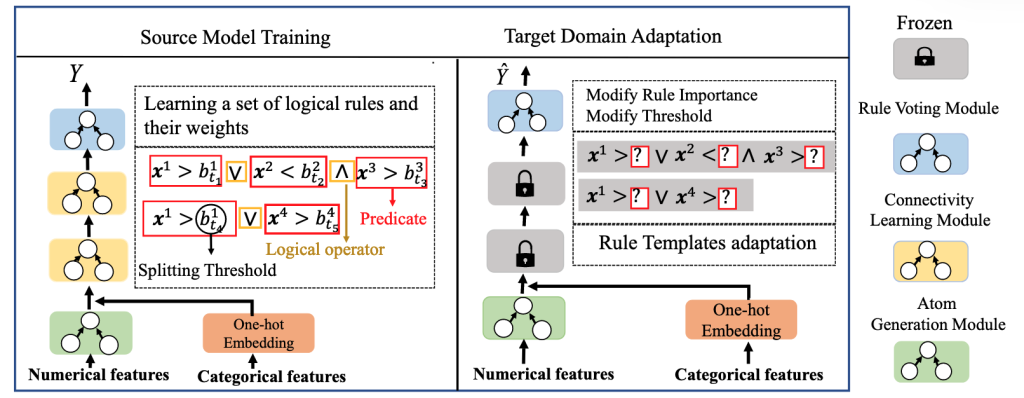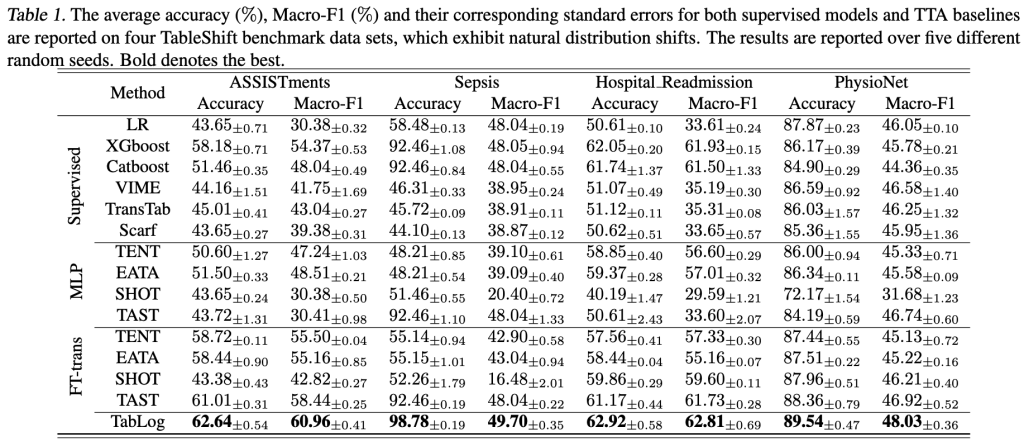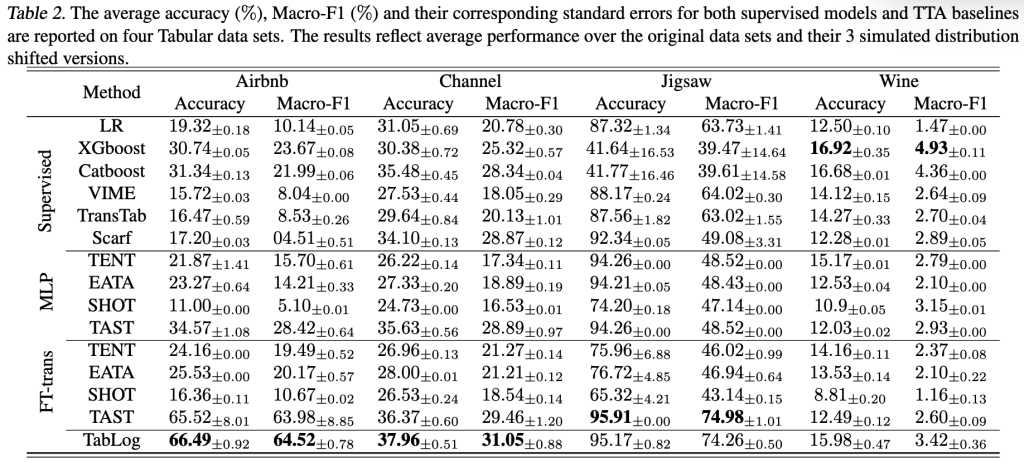Summary
This paper presents test-time adaptation (TTA) methods for logic neural networks (LNNs) in the context of tabular data. The key contributions of this work are as follows:
- [Novel TTA Objective] It designs an unsupervised optimization objective specifically for tabular test-time adaptation. This objective is formulated as:
, where
denotes the feature representation of
extracted from the penultimate network layer, and
represents the feature of the perturbed input
.
- [Novel TTA Optimized Parameters] This optimization objective is employed to refine both the atom (which is the logic unit of every single feature) thresholds and rule weights of the network.
- [Novel TTA Application] It introduces test-time adaptation for logic neural networks, expanding their applications.

Comments
- ✅ [Reasonable Tabular Feature Solution] Utilizing a logic neural network is a reasonable approach for handling tabular data, as it provides an effective solution for numeric, boolean, and categorical features.
- ✅ [Solid Experiments] The experiments in this paper are solid, utilizing datasets from the TableShift benchmark as well as real-world applications. The proposed method consistently demonstrates superior performance, achieving the best results across the conducted experiments.
- ❌ [Modest Contribution] The contributions of this paper are relatively modest. The test-time adaptation primarily involves the use of a contrastive loss, which is not a novel approach. Additionally, the adaptation of thresholds and rules is straightforward and lacks significant innovation. Furthermore, the logic neural network utilized in this work is also not novel.
- ❌ [Lack Comparison with Source LNNs] The performance of the source logic neural network is not reported in this paper, which obscures the true effectiveness of the proposed TTA method. Without a comparison to the baseline performance of the source model, it is difficult to fully assess the impact and real-world benefits of the test-time adaptation approach introduced in this work.








Comments | NOTHING